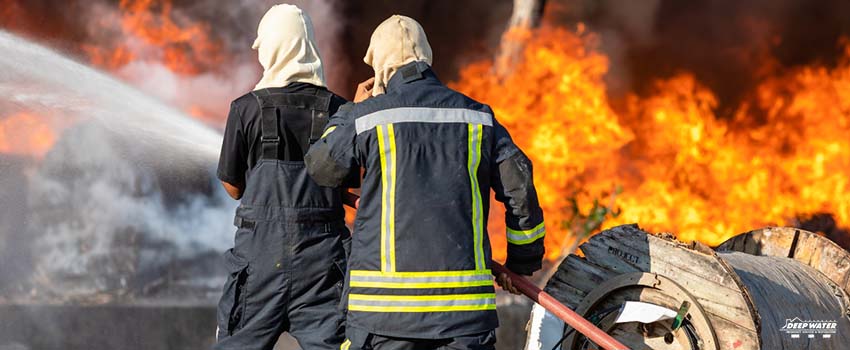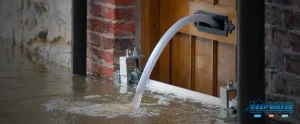In 1925, President Calvin Coolidge ordered that Fire Prevention Week be observed as a national event to commemorate a destructive fire in Chicago in 1871. The ferocious conflagration started on October 8 and was put out two days later. It left more than 250 people dead, 100,000 others homeless, and destroyed over 17,400 structures, covering approximately 2,000 acres of land.
When Is Fire Prevention Week?
Fire Prevention Week is observed every year, starting from October 4 up to October 9, in remembrance of the disastrous Chicago Fire. It is considered among the oldest public health events in America. The week-long observance normally sees children and adults engaged in activities where they are taught how to keep safe in the event of a fire. Firefighters are also invited to share their experiences as part of the continuing efforts to reduce the number of fire-related deaths each year.
9 Simple Fire Prevention Week Activities
Fire safety education is crucial to reduce civilian fire deaths. Around 80.7 percent of these fatalities occur at home, which is considered significant. The following are excellent ways of reducing these deaths while effectively commemorating the victims of the Great Fire:
1. Check the Alarm
Many fire experts agree that residential smoke alarms have saved countless lives over the past forty years. However, these safety devices normally last only for ten years. Although many of them have built-in features that send off signals when it’s time for them to be replaced, it’s still best if you check your smoke alarms. This is recommended by many fire prevention tips and should help ensure that the devices are still fully functional.
2. Do the Drill
Fire drills should be practiced each year, even in your home. The risk of injury and even death due to a house fire can be reduced if you know what to do in such an emergency. One fire drill can be conducted at night just before the kids go to bed and another one during the day when all household chores are done, and you’re just relaxing.
The drills can be made fun and exciting by including the crawl and roll game. Briefly, the game will help children understand that when their clothes catch fire, they must crawl and roll to put out the flames. While they roll, the children should also be taught to cover their mouths.
3. Draw Your Home
Using paper and pen, you can draw a map of your house with everyone in the family watching. Show them where the exits are located and the quick and safe way to reach them in case of a fire emergency.
4. Teach the Children
It would help if you told your kids that they should not panic when there’s a fire. Instead, teach them to calm down and to call the local emergency number so that they can ask for help.
5. Mark a Meeting Spot
A meeting place can be set, which you can include in your fire safety plan. As part of the drill, you can show your kids the best routes to the designated meet-up spot. This way, they will know where to go if they get separated from you during a fire.
6. See a Fireman
If you have school-age children, a firefighter visit is sometimes scheduled as part of a comprehensive fire prevention education plan. This can be an enriching experience for your kids, especially if the instructor can assist the visiting firefighter in making the discussion fun and lively by coming up with a fire scenario complete with firefighting props.
7. Play a Game
Create a game where your children can practice putting out a fire from a makeshift building using small fire extinguishers. The fires can be made from orange and yellow colored papers. You can also play a guessing game with your kids using various fire prevention materials such as fire extinguishers and smoke alarms.
8. Show the Exit
Teachers can ask the children to walk around the premises and look for the exit signs in school. This will allow them to learn where they can go if they must go out because the school building is on fire. Made-up exit signs can also be placed in various areas of the school, which the kids will be asked to look for and follow.
9. Close the Door
When leaving the house, it’s good practice to close the doors because this can slow down the spread of smoke and heat in case of a fire. Doors serve as your primary shield from a fire. They can become more effective if they are closed as oxygen flow gets restricted. This slows down the spread of fire and can buy you enough time to find a way out.
At night, the bedroom doors should also be closed, a practice that you should teach your children if they have their own rooms. This should be observed every night, and not only during Fire Prevention Week.
Key Takeaway
Fire Prevention Week commemorates a tragic event that occurred more than a century ago. More importantly, it seeks to promote greater awareness among the public on the importance of preventing fires to keep lives from being lost unnecessarily.
Various activities are usually held to observe the week-long event. Many of these stress the need to be calm so your mind can think fast on what you need to do. These can include performing standard fire drills, locating the nearest exit, and identifying the people you should call to put out a fire or to help restore a property that suffered from fire damage.
Contact Deep Water Emergency Services and Mitigation for your fire damage mitigation needs.
Even during the observance of Fire Prevention Week, a fire can still take place. If you need to restore your damaged home to its former glory, Deep Water Emergency Services and Mitigation is the company that can help you.
We have a professional fire damage mitigation team that can take on the mitigation work and complete it to your satisfaction. We guarantee excellent and top-notch service. Call us now.






